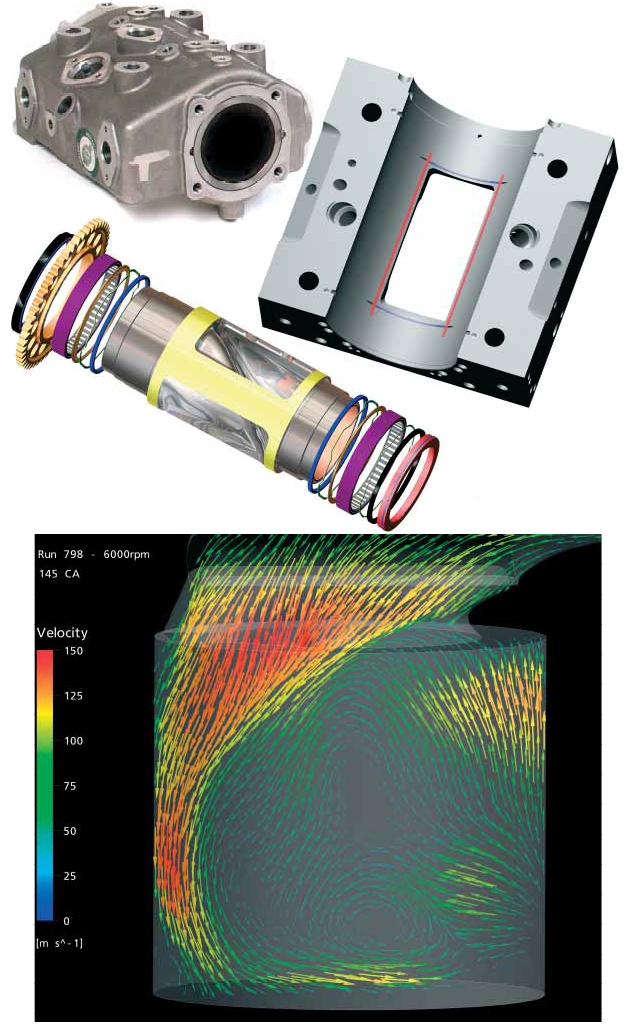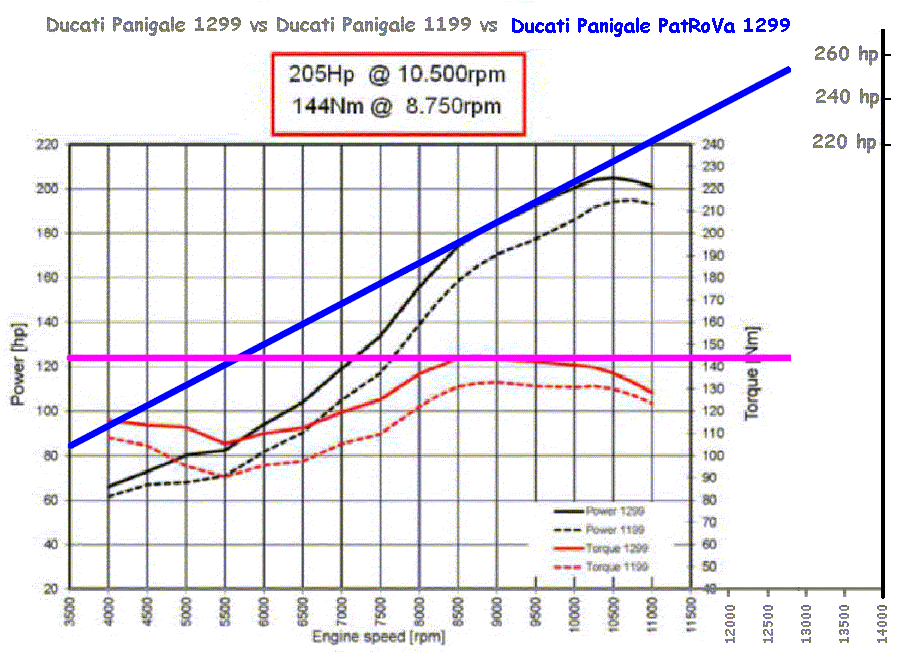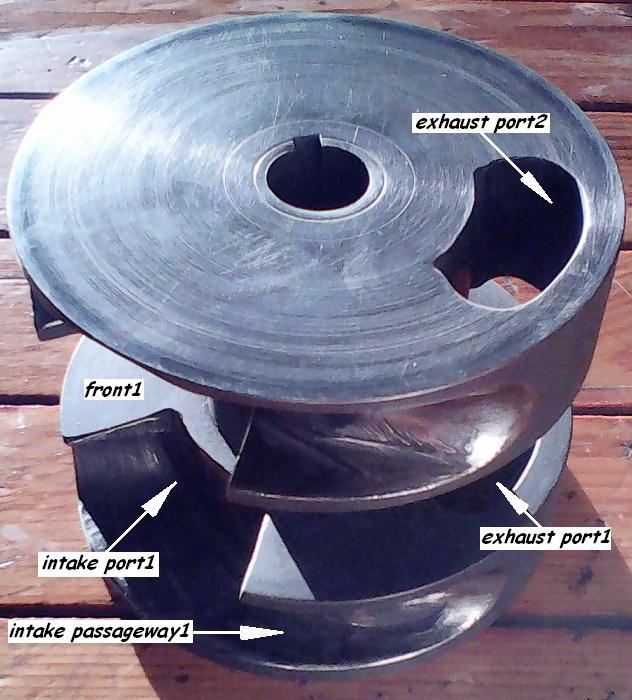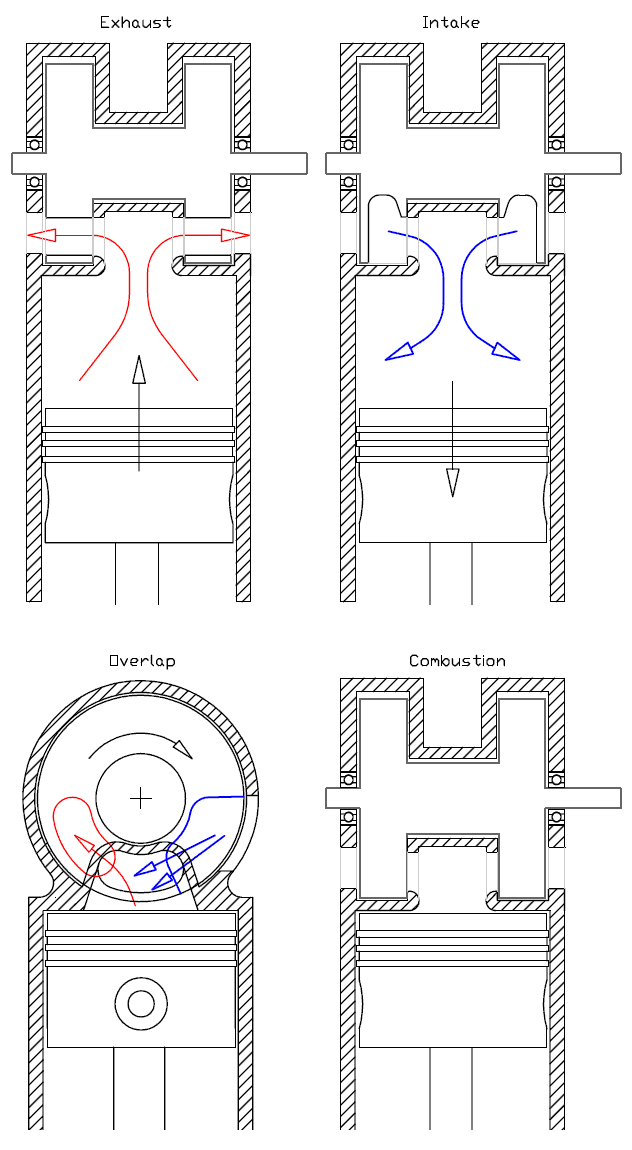Hello Tommy Cookers.
Thanks for your objections..
You write:
“(the NACA showed) HUCR/boost is governed by piston crown temperature not valve temperature, assuming 'sodium-cooled' valves, of course any HUCR gain would yield little or no benefit to an N/A engine at such high rpm (eg recent very high CR in N/A F1 was not octane-limited) and most of the exhaust-related cooling need is due to exhaust heat inevitably picked up by the exhaust port, not the valve ?”
Quote from
http://home.people.net.au/~mrbdesign/PD ... echBRV.pdf
The Technology
The Bishop Rotary Valve (BRV) is an axial flow rotating valve incorporating both the inlet and exhaust port in the same valve.
There is one valve per cylinder positioned with its axis perpendicular to that of the crankshaft.
The steel valve is supported in two shell type needle roller bearings that ensure the valve’s stepped centre portion always runs with a small radial clearance to the housing.
The outside diameter of the valve’s centre portion and the bearings are similar, allowing the valve assembly to be housed in a stepless bore.
Face seals located at each end of the valve’s centre portion prevent cooling and lubrication oil entering the centre portion and the cylinder.
At the exhaust end a carbon face seal keeps the oil and exhaust gas separate while at the inlet end a lip seal separates the inlet air and oil.
The valve is driven by a gear at the inlet end.
The outside diameter of the valve generally lies in the range 0.67 - 0.74 that of the cylinder bore diameter allowing it to be fitted to engines with conventional cylinder bore spacings.
The valve rotates at half engine speed and eliminates the inertia induced forces that have plagued the development of reciprocating poppet valve mechanisms since the invention of the IC engine.
It is this feature that has inspired numerous inventors over the last century to chance their hand at developing rotary valve engines.
These developments have generally failed due to a combination of problems involving gas sealing, oil sealing, excessive friction and seizure caused by thermal and mechanical distortion of the valve.
As a portion of the rotary valve’s periphery is periodically exposed to the combustion process it is inevitable that thermal and mechanical distortion of the valve will occur.
Bishop focused on finding a solution that would allow this small but inevitable distortion to be accommodated.
In arrangements where both the inlet and exhaust port are in the same valve, a satisfactory solution is complicated by the requirement to prevent leakage between these ports.
A typical previous approach was to use a stationary split sleeve located around and lightly preloaded against the valve’s periphery.
In such arrangements it was very difficult to create an even distribution of oil between the valve surface and the sleeve.
This, combined with the sleeves poor ability to accommodate local distortion, resulted in high friction and seizure.
In the BRV arrangement the small radial clearance between the valve’s periphery and its housing is designed to ensure that any thermal or mechanically nduced distortion of the valve is accommodated without the valve’s periphery ever touching its housing.
Provided the radial clearance is kept small it provides sufficient flow resistance to prevent significant flow of gases between the exhaust and inlet port. In applications where this is not the case Bishop has developed additional technology to control these flows.
This approach was immediately successful and allowed the early development to proceed without seizure, friction or lubrication problems. . .

This oblique flow through the window is responsible for one of the rotary valves most useful attributes: its strong in-cylinder tumble flow.
The tumble ratio on engines with near square bore/stroke ratios is typically twice that reported for similar 4 valve engines.
Unlike the poppet valve this high tumble flow is generated without any loss of volumetric efficiency (VE) and is responsible for very fast burn rates observed.
Production based engines built in the early 1990’s had ignition timing of 15°, or less than half that of the best four valve engines.
The testing
. . .
The numerous BRV engines tested over the last 18 years have all demonstrated remarkable resistance to engine knock. In the early 1990s engines with conventional bore/stroke ratios ran compression ratios as high as 15:1 on
unleaded 93 octane pump petrol.
The F1 single cylinder engine ran compression ratios as high as 17:1 using standard F1 fuels before settling on 15.3:1 as optimum.
No evidence of knock has ever been observed and this is thought to arise from an absence of any hot surfaces in the combustion chamber (the valve surface moves continuously through the combustion chamber) and the very fast combustion rates.
Bishop anticipates rotary valve production engines could run compression ratios as high as 15:1.
End of quote.
You also write:
“the Cycle World quote is 90% wrong - sparking at 60+deg is to burn much of the charge at peak compression rather than later all modern car engines spark timing (and diesel timing) is such that some (a trivial amount of) combustion occurs before tdc what little work done on the piston pre-tdc is far from wasted”
60 deg spark advance means uncontrolled combustion, low combustion rate, hot piston crown, lower HUCR etc.
For an engine having 13:1 compression ratio, 60 degrees spark advance means than the spark happens (and the combustion starts) at some 2.5:1 instant compression ratio. Think what this means.
In the above quote for the Bishop Rotary Valve, the “absence of any hot surfaces in the combustion chamber” (without exhaust poppet valves, the “absence of any hot surfaces” means that the piston crown runs substantially colder) and the “very fast combustion rates” are mentioned as responsible for the remarkable knocking resistance.
In the above quote also writes:
“Unlike the poppet valve this high tumble flow is generated without any loss of volumetric efficiency (VE) and is responsible for very fast burn rates observed.
Production based engines built in the early 1990’s had ignition timing of 15°, or less than half that of the best four valve engines.”
With less than 30, instead of 60+ deg spark advance (i.e. half than in the conventional 4-valve short stroke racing engine), in the engine with the 13:1 compression ratio the combustion starts at an instant compression ratio of more than 6.5:1.
Differently speaking, the piston from the moment the spark happens to the TDC has to travel more than 30% of its stroke in the one case, and less than 10% in the second case.
You also write:
“you cannot destroke an engine and have an rpm benefit proportionate to the b:s ratio change ie based on restoring the original piston speed the rpm benefit of reduced stroke will be (close to) the square root of the b:s ratio change ie based on restoring the original piston acceleration as the acceleration-related stresses in the reciprocating parts are the dominant design factor so the rpm benefit of destroking is less than some imagine
ok, if going rotary valve greatly reduces the piston mass then a bigger rpm benefit is possible “
Even this way, the power would go from 200 to 230+.
However the acceleration is not the dominant design factor.
Take the tiny OS .18 TZ RC/model engine (more at
http://www.pattakon.com/tempman/osmz211 ... cnitro.pdf ).
Its rev limit is some 4 times higher than Ducati’s Panigale (42,500 rpm vs 11,500rpm), while its stroke is some 4 times smaller than Ducati’s Panigale 1299 (15mm vs 60.8mm).
Supposing similar con-rod to stroke ratio, the maximum acceleration of piston of the small engine is some 4 times higher than the maximum acceleration of the piston of the big engine.
OK, the OS.18 is a ringless small 2-stroke engine.
The same happens with the short stroke (40mm for 100mm bore) F1 engines revving at 20,000rpm. The maximum piston acceleration doubles as compared to that in the Ducati Panigale 1299 at its rev limit.
The peak specific torque (and of the specific torque at the peak power revs) of the F1 engines is not less than Ducati’s Panigale.
I.e. the power increases linearly with the revs (the revs of the peak power).
The best 4-stroke NA (naturally aspirated) poppet valve engines have a specific torque of less than 125mNt/l (m*Nt per liter of engine displacement).
With freer breathing the specific torque can increase only a little; however, and provided the underneath mechanism (piston, con-rod, crankshaft, casing) is capable to withstand the punishment, the specific power can increase a lot by combining a freer breathing with higher revs (as the Bishop rotary valve did before the F1 rules were changed to abandon the rotary valves).
At 14,000rpm, 50mm stroke means a piston acceleration substantially lower than in the NA F1 engines. With 128mm bore, a PatRoVa Ducati Panigale is expected to make some 250 PS instead of the 200 of the same capacity original engine.
You also write:
“egarding valve sizing (benefits) ......
the EV is sized to trade EV ke loss against IV ke loss, for the optimum combined performance
available IV ke being less than available EV ke, the absolute EV ke loss will legitimately be more than the absolute IV ke loss
at worthwhile % power the flow losses in the exhaust blowdown will be vastly higher anyway due to sonic, even supersonic, flow
(current F1 has high exhaust pressure and density, reducing peak velocities in blowdown to the benefit of recovery)
and there's no benefit from having valves bigger than necessary .....
conventionally/traditionally there's disbenefit from oversize, from lower velocity/stagnation pressure where inlet&exhaust( are 'porting to atmosphere'
reducing ke benefits to breathing below peak power rpm but (maybe) not ? reducing (if so chosen) 'top-end' inlet and exhaust tuned length benefits
eg the hugely trendsetting GP Peugeot c 1912 and the 1966 McLaren F1 (initial destroked Indy V8) suffered excess valve/port-to-atmosphere area”
This plot (power and torque of the Panigale 1199 and Panigalle 1299) shows the problem.

The 1299 needs freer breathing (bigger valves? wilder camshafts? longer duration?). Maybe the Desmodromic cylinder head is at its limit.
Spot on the torque difference at 8,000rpm and see how smaller (almost half) it is at the peak power revs.
The breathing and the combustion rate / combustion efficiency are the problems, not the rev limit and the acceleration of the piston.
See how quickly the torque drops after 10,500rpm.
If the Panigale 1299 could keep its peak torque till the rev limit (11,500rpm according the CycleWorld), some 230hp could be made.
With shorter stroke (50mm stroke x 128mm bore instead of 60.8mm stroke x 116mm bore of the original 1299) and free breathing (PatRoVa rotary valve on the cylinder head) theoretically things can substantially improve as the blue (power) and purple (torque) lines in the following modified plot show.

Thanks
Manolis Pattakosos






